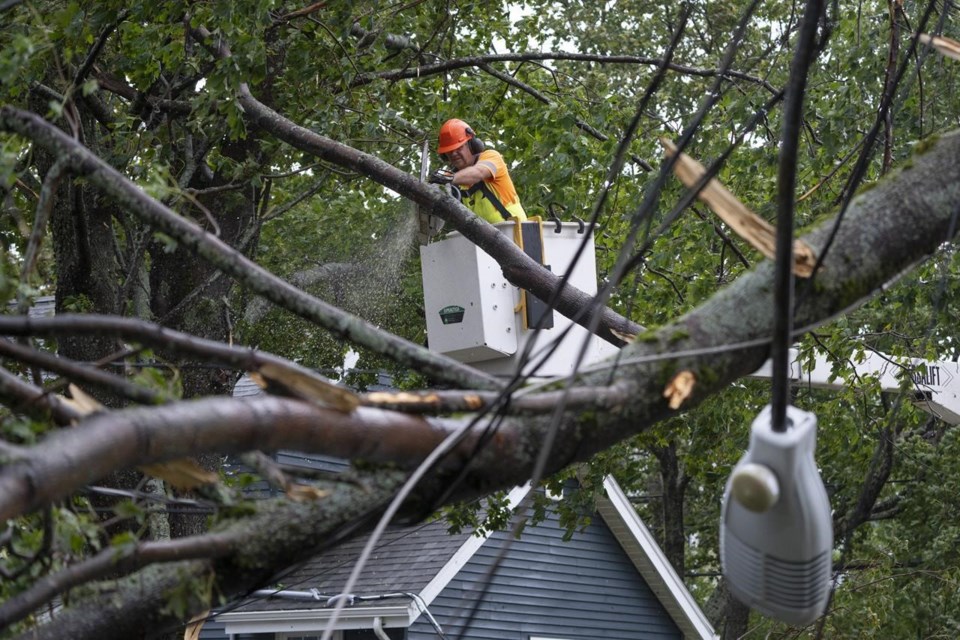HALIFAX — Nova Scotia's electric utility says its plans to nearly double its tree-trimming budget should improve reliability in electrical service when the next hurricane strikes.
The added funds will reduce the probability of damage to power lines when massive gusts take down trees and branches, Matt Drover, director of energy delivery at Nova Scotia Power, told a news conference Wednesday.
"It will definitely help. It will reduce the likelihood of trees falling into power lines. But with (hurricane) winds that high, that will always have (an) impact on trees," Drover said.
"Our goal is to reduce that as much as we can with this investment."
Trevor Beaton, forestry manager at the utility, said the tree-trimming annual budget will increase to almost $45 million in 2024, compared with budgets in recent years of about $20 million to $25 million.
Beaton said the new money will help its tree-cutting teams grow to about 85 crews, up from about 45, increasing total staffing from roughly 100 people to up to 180 employees, he said.Â
The majority of the cutting will occur in rural areas, Beaton said, particularly where forests border electricity lines. In many instances the trees that pose risks to power lines don’t belong to the utility, he said, adding that NS Power must work with homeowners and municipalities to gain permission to trim or remove trees.
Hurricane Fiona made landfall on Sept. 24, 2022, and left 425,000 customers without power, with an average outage period of about four days.
Part of the investment in tree cutting is being driven by legislation passed last year, requiring that 1.8 per cent of the general electricity rate increases go to strengthening the reliability of the power system.Â
The Progressive Conservative government has been critical of the utility since Fiona, saying the company has not invested enough money to maintain infrastructure over the past decade.
The utility has said it is motivated to reduce costs incurred by hurricane-related damage.
Documents filed in late July by Nova Scotia Power to the province's utility regulator say the total damage to the electricity system from Fiona was about $115 million, as the storm took down 3,073 electricity wires, broke 2,700 poles and damaged 44 transmission lines. The cost-sharing plan between ratepayers and the utility's shareholders hasn't yet been determined by the Nova Scotia Utility and Review Board.
Paul Dandurand, the utility's manager of reliability, told the news conference the utility is planning for more frequent and powerful hurricanes. "We're heavily focused on making investments in our system in the face of climate change and intensifying weather," he said.
Dandurand noted that the reliability department was created earlier this year by the utility, and will be responsible for responding to customers' concerns about the electrical grid's durability.
Drover said that in addition to better tree management, the utility is installing higher and wider poles, and will be working with municipalities and developers to bury power lines when new subdivisions are built.
This report by The Canadian Press was first published Aug. 9, 2023.
Michael Tutton, The Canadian Press




